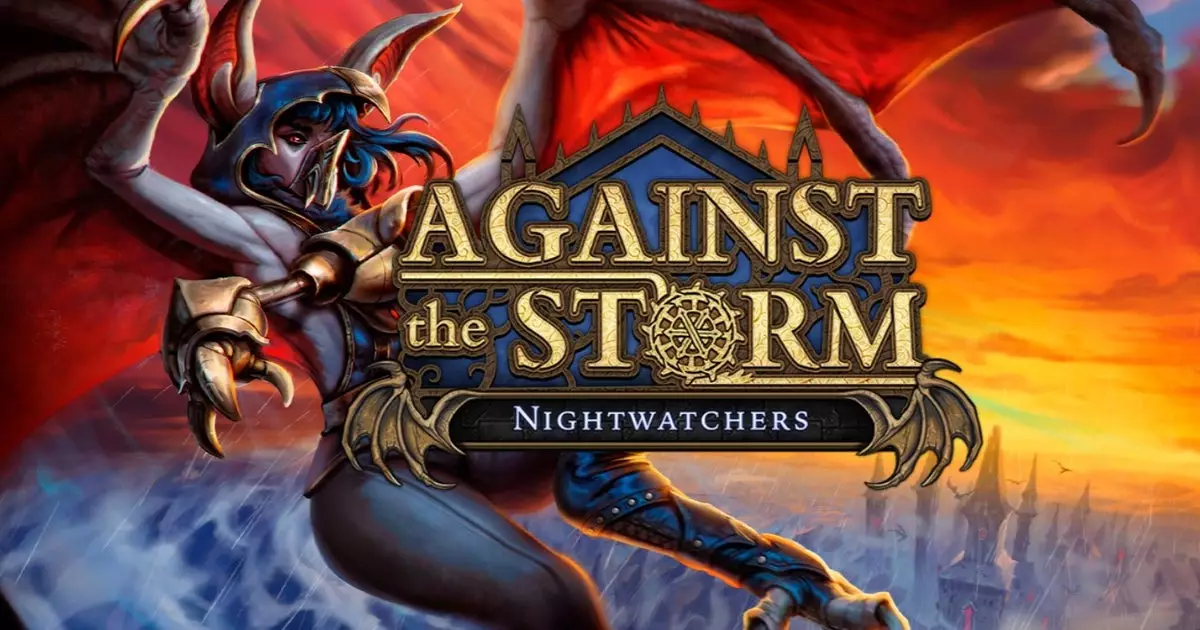Against The Storm has long positioned itself as an innovative blend of rogue-lite elements and city-building mechanics, captivating players with its gritty survival themes and procedurally generated worlds. The recent announcement of its second DLC, “Nightwatchers,” exemplifies how developers are not content with static content but seek to shake up the gameplay experience with unconventional additions. The decision to introduce bats as a playable faction might seem whimsical on the surface, yet it signals a deeper intention to challenge traditional expectations about strategy and alliances. This move into the realm of the bizarre—where creatures labor, form complex societal hierarchies, and thrive in volatile environments—pushes the genre into uncharted territory.
The focus on bats as a central faction is provocative. Unlike the typical city builder, which often emphasizes resource management and territorial expansion, this DLC centers around an unsettling symbiosis, where creatures driven by primal instincts and social dynamism redefine what it means to coexist within a game’s ecosystem. Their ability to manipulate social cohesion—expelling rival species and gaining resolve when others leave—introduces a new layer of strategic depth that encourages players to think beyond mere resource collection. It demands a nuanced understanding of social hierarchies and psychological warfare, elevating the gameplay from simple survival to an intricate dance of diplomacy and dominance.
Biome Innovation: From Rocky Wastelands to Fertilized Forests
What truly elevates “Nightwatchers” is its dual-biome design, each offering radically different challenges and opportunities. The Rocky Ravine, a stark, resource-rich wasteland filled with metal and stone, embodies a harsh environment where merciless traders lurk behind the facade of commerce. The addition of a Black Market, with its volatile prices and hidden dealings, introduces high-stakes economic management. This forced adaptation forces players to think creatively about navigating exploitation and resource scarcity simultaneously—a meta-layer of gameplay that enhances replayability and tension.
In contrast, Bamboo Flats offers a surprisingly optimistic twist. Despite its relentless rain and infertile soil, the biome becomes viable through innovative interactions with the giant Fluffbeak. Keeping this bird happy by managing its basic needs results in the fertilization needed for agriculture, turning an otherwise inhospitable environment into a fertile ground for growth. This dynamic highlights a core theme: that ingenuity and care can overcome environmental adversity. It also injects a touch of humor—imagine nurturing a giant, feces-producing bird to create a thriving settlement—adding a playful and absurd element to the game world.
These biomes do more than just diversify landscapes; they redefine the strategic scope of the game. Players must shift their mindset from straightforward survival to environmental manipulation and social engineering, making each playthrough an exploration of unconventional tactics.
Innovative Mechanics and Surprising Twists
The DLC goes beyond mere aesthetic changes, promising new orders, world events, and rewards that deepen gameplay complexity. The introduction of new merchants and volatile markets challenges players’ economic savvy, pushing them to weigh risks versus rewards more carefully. Meanwhile, managing a bird’s satisfaction to produce sustainable benefits adds an element of care-based strategy, reminiscent of virtual pet mechanics but on a more granular and survival-oriented scale.
Interestingly, the developers are betting on the humorous and absurd aspects of the DLC to serve as a catalyst for engagement. The notion of a bird that produces fertilizer simply by being fed and kept warm transforms the campaign into a bizarre yet compelling effort at ecological management, tethered with a dark, tongue-in-cheek undertone. It’s a bold move—embracing the weirdness while maintaining tight gameplay mechanics—that could set a new standard for genre innovation.
The Broader Impact: Challenging Genre Conventions
What makes “Nightwatchers” genuinely remarkable is its willingness to challenge genre conventions. Instead of incremental updates that merely polish existing mechanics, it ventures into the realm of the quirky and unexpected, forcing players to adapt in ways they didn’t anticipate. The inclusion of a faction that thrives on social dominance and manipulation is a departure from traditional city-building narratives centered around growth and harmony. Similarly, biome diversity with contrasting challenges encourages strategic flexibility and experimentation.
Developers seem to be signaling that successful gameplay relies increasingly on adaptability, creativity, and a willingness to embrace the bizarre. As players navigate the treacherous Black Market or nurture a fecundating bird, they are subtly encouraged to think outside the box—an essential trait for any thriving colony in the game’s harsh, unpredictable worlds.
In essence, Against The Storm’s new DLC exemplifies how pushing boundaries—whether through eccentric factions or bizarre biome mechanics—can invigorate a genre that sometimes risks becoming formulaic. It’s a bold reminder that innovation often resides in unexpected places, and sometimes, the strangest ideas lead to the most satisfying gameplay revelations.

